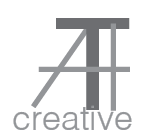Over the last few months, I’ve noticed that I often have to explain what I do for a living. Though most people have a general idea what freelancing is, they don’t understand what information graphics are, or furthermore, why someone would need a freelance researcher/editor to help make them. I finally decided that if friends and family are this interested (and confused) then perhaps it was time I addressed this question in a blog post.
First, let’s start with the basics. When I say that I do freelance editorial work for graphics, I mean that I work with the visual display of information, often referred to as data visualization and information graphics (or as Nigel Holmes prefers to say “explanation graphics”). These graphics and visualizations can take many forms: charts, graphs, maps, illustrations, 3D models, etc. They can be print or digital, interactive or static, incorporated into an article or stand alone, and consist of one element or many. But of course, as Alberto Cairo points out in his book The Functional Art, “graphics, charts, and maps aren’t just tools to be seen, but to be read and scrutinized . . . aesthetics do matter, but aesthetics without a solid backbone made of good content is just artifice.”
So, where do I fit into this? Well, I work with the content. Though it differs from client to client, the services I provide include: figuring out what the most interesting content might be, doing in-depth research, coming up with suggestions for visual presentation, working with a designer to turn them into reality, editing the visual elements for accuracy, and writing/refining the words that accompany the graphics. As this can be a mouthful, sometimes I find it better simply to say: I help others to work more quickly and efficiently, so that the best possible visual content can be created. In essence, I am that person that helps everyone else achieve their full potential. Ever heard someone say that they could have done it better if only they’d had more time, resources, and information? Well, that’s what I provide.
Now, you might be saying “Wow, that’s cool, but isn’t that a pretty niche market?” And you would be right. Except that information graphics, data visualization, interactive media, and the like, are practically taking over journalism – especially online. Heard of “Big Data?” Unless you’ve been living under a rock, with no Internet connection, and only a lizard for a friend . . . I’m pretty sure you have. Well, today there is more data and information accessible to journalists than ever before, and this data can be used to make lots of things easier to understand; to show us patterns that, until now, we didn’t even know existed. Nathan Yau, author of Data Points and creator of FlowingData.com, describes the best visualization as something that “evokes that moment of bliss when seeing something for the first time, knowing that what you see has been right in front of you, just slightly hidden.” As you can imagine, it’s not just the news media that are interested in harnessing the power of data viz and information graphics, but also magazines, marketing firms, blogs, non-profits, financial institutions, museums, and many others.
During my career I’ve had the pleasure to work with several such organizations, many of which have been surprised by my background (I have a BA and an MA in History). Though they may wonder how I ended up working in visual journalism, to me it always seemed like a natural extension of my professional and academic training. Indeed, working in an art museum and taking graduate courses in museum studies and historic preservation has, perhaps, informed the way I look at graphics more than anything else. To design an exhibit you must ask many of the same questions that you would while designing information graphics. Who is my audience, what is my narrative, how do I want people to interact with my content, what do I want them to come away with, and what sort of design will help me achieve all of this? Over the years I’ve fulfilled various different professional roles, but all had certain key elements in common: research, writing, art, and communicating with the public. And all have benefitted from my training as an historian.
In the end, because no proper examination of what I do would be complete without visuals, “Part 2” will focus on the research/editing process and provide some examples from projects I’ve worked on over the past few years. Why break it up into two parts, you ask? Well, after working on this post off and on for a few weeks (and inevitably being distracted by more pressing deadlines), I finally decided to upload it in two parts. Pulling together examples from past projects requires a walk down memory lane – a very pleasant, but nonetheless time consuming process. And, I’d rather stroll than sprint . . .
